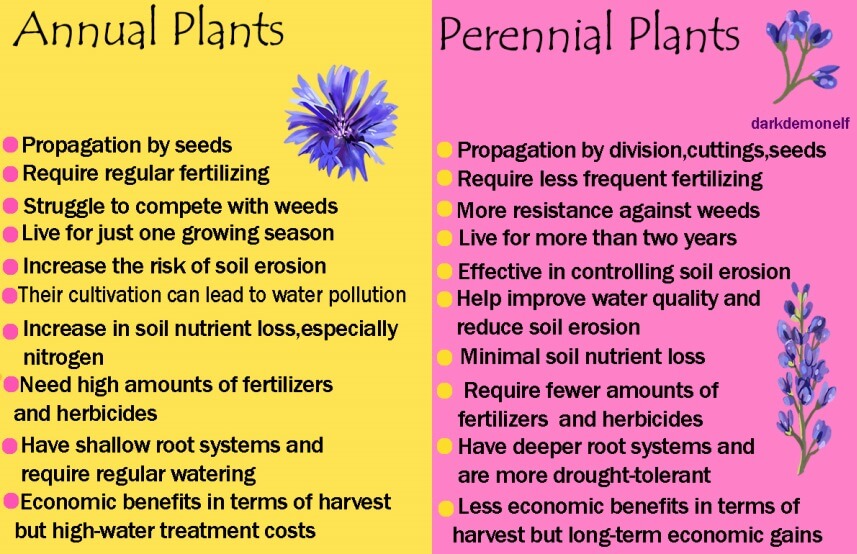Choosing Between Annuals And Perennials: A Practical Guide For Gardeners

Table of Contents
Understanding Annuals: A Season of Bloom
What are Annuals?
Annual plants complete their entire life cycle – from seed to flower to seed again – within a single growing season. Unlike perennials, they don't survive the winter. Popular examples include vibrant zinnias, cascading petunias, and cheerful marigolds. These plants offer a burst of color and are incredibly versatile for garden design. Many annuals are also readily available as seedlings, making them a quick way to add an instant impact to your garden beds and containers.
Advantages of Annuals:
- Vibrant Color and Variety: Annuals offer an explosion of color and a wide array of shapes, sizes, and textures. You can choose from hundreds of varieties to create a truly unique and eye-catching display. From delicate blooms to bold, showy flowers, the possibilities are endless.
- Fast-Growing and Quick Results: Annuals quickly fill gaps and add instant impact to your garden. This makes them perfect for containers, borders, or adding a pop of color to a bare spot. You'll see results almost immediately, making them rewarding for even novice gardeners.
- Excellent for Containers and Hanging Baskets: Their relatively small size and fast growth make annuals ideal for container gardening. This allows you to create beautiful displays on patios, balconies, or even windowsills.
- Ideal for Filling Gaps and Creating Seasonal Displays: Annuals excel at filling in empty spaces or creating themed displays for specific seasons. You can easily change the look of your garden each year by selecting different annual varieties.
Disadvantages of Annuals:
- Require Replanting Yearly: This is the most significant drawback. Annuals must be replanted each spring, representing an ongoing cost and effort.
- Higher Maintenance: They often require more frequent watering, deadheading (removing spent blooms), and fertilization to maintain their vibrant appearance.
- Susceptible to Pests and Diseases: Annuals can be more susceptible to common garden pests and diseases than some perennials, requiring extra vigilance and potentially the use of pesticides or other control methods. This increases the time commitment and maintenance involved.
- Less Environmentally Friendly (Potentially): The constant need to replace them contributes to a higher environmental impact compared to perennials due to increased water consumption and potential waste from discarded plants.
Exploring Perennials: Years of Beauty
What are Perennials?
Perennials are plants that live for more than two years. They typically die back to the ground in winter and re-emerge in spring, providing a longer-lasting display than annuals. Popular examples include resilient coneflowers, shade-loving hostas, and fragrant lavender. Many perennials offer repeat blooms throughout the growing season, adding continuous beauty to your garden.
Advantages of Perennials:
- Long-lasting and Cost-Effective: Once established, perennials require minimal replanting, making them a long-term, cost-effective solution for your garden. They’ll continue to return year after year, providing ongoing beauty.
- Lower Maintenance (Once Established): While they may require some initial care to establish a strong root system, mature perennials generally need less watering, fertilizing, and deadheading compared to annuals.
- Environmentally Friendly: Their longevity reduces the need for constant replanting, making them a more sustainable choice for your garden.
- Attract Pollinators: Many perennials attract beneficial insects, such as bees and butterflies, contributing to a healthy garden ecosystem.
- Increase Garden Value Over Time: A well-established perennial garden adds significant value and curb appeal to your property.
Disadvantages of Perennials:
- Slower to Establish: Perennials take time to establish a robust root system, meaning they might not provide immediate impact like annuals.
- May Require Division: To prevent overcrowding and maintain vigor, some perennials need to be divided every few years. This involves digging up the plant, separating it, and replanting the divisions.
- Can Be More Expensive Initially: The upfront cost of purchasing perennial plants can be higher than buying annual seedlings.
- Shorter Bloom Period (Some Varieties): While many perennials offer repeat blooms, some may have a shorter flowering period than certain annuals.
- Limited Variety in Some Regions: The range of perennials that thrive in a specific climate may be more restricted compared to annuals.
Annuals vs. Perennials: Which is Right for You?
Consider Your Gardening Style:
Are you a low-maintenance gardener who prefers a set-it-and-forget-it approach? Perennials might be a better choice. Do you enjoy the constant change and vibrant bursts of color? Annuals might suit you better. Consider your time commitment and energy levels when making your decision.
Consider Your Climate and Soil:
Certain annuals and perennials thrive in specific climates and soil conditions. Research which plants are best suited for your region and soil type to ensure success. For instance, drought-tolerant perennials might be ideal for arid climates, while moisture-loving annuals might be more suitable for consistently damp areas.
Consider Your Budget and Time Commitment:
Annuals require a greater financial commitment and time investment each year due to replanting and higher maintenance. Perennials, although more expensive initially, offer long-term savings in terms of time and money.
Conclusion
Choosing between annuals vs perennials depends entirely on your gardening goals, experience, and resources. Annuals provide instant gratification with vibrant color and a wide variety of choices, but require more time and money in the long run. Perennials offer a long-term, sustainable solution with less maintenance once established, but may require more patience initially. By carefully considering the pros and cons of each, you can make an informed decision that sets you up for a beautiful and thriving garden. Start planning your garden today by weighing the benefits of annuals vs perennials and choose the option that best reflects your unique needs and desires. For more helpful tips on garden planning, check out our comprehensive guide [link to related article].

Featured Posts
-
 Kremlin Calls Trumps Remarks On Putin An Emotional Outburst
May 29, 2025
Kremlin Calls Trumps Remarks On Putin An Emotional Outburst
May 29, 2025 -
 The Harry Potter Tv Series Will It Diminish Jason Isaacs Career
May 29, 2025
The Harry Potter Tv Series Will It Diminish Jason Isaacs Career
May 29, 2025 -
 Court Rules Against Live Nation In Dojs Coercion Lawsuit
May 29, 2025
Court Rules Against Live Nation In Dojs Coercion Lawsuit
May 29, 2025 -
 France Weekend Trip Key Roads To Avoid Traffic Congestion
May 29, 2025
France Weekend Trip Key Roads To Avoid Traffic Congestion
May 29, 2025 -
 Palestine Recognition Key To Indonesia Israel Relations
May 29, 2025
Palestine Recognition Key To Indonesia Israel Relations
May 29, 2025
